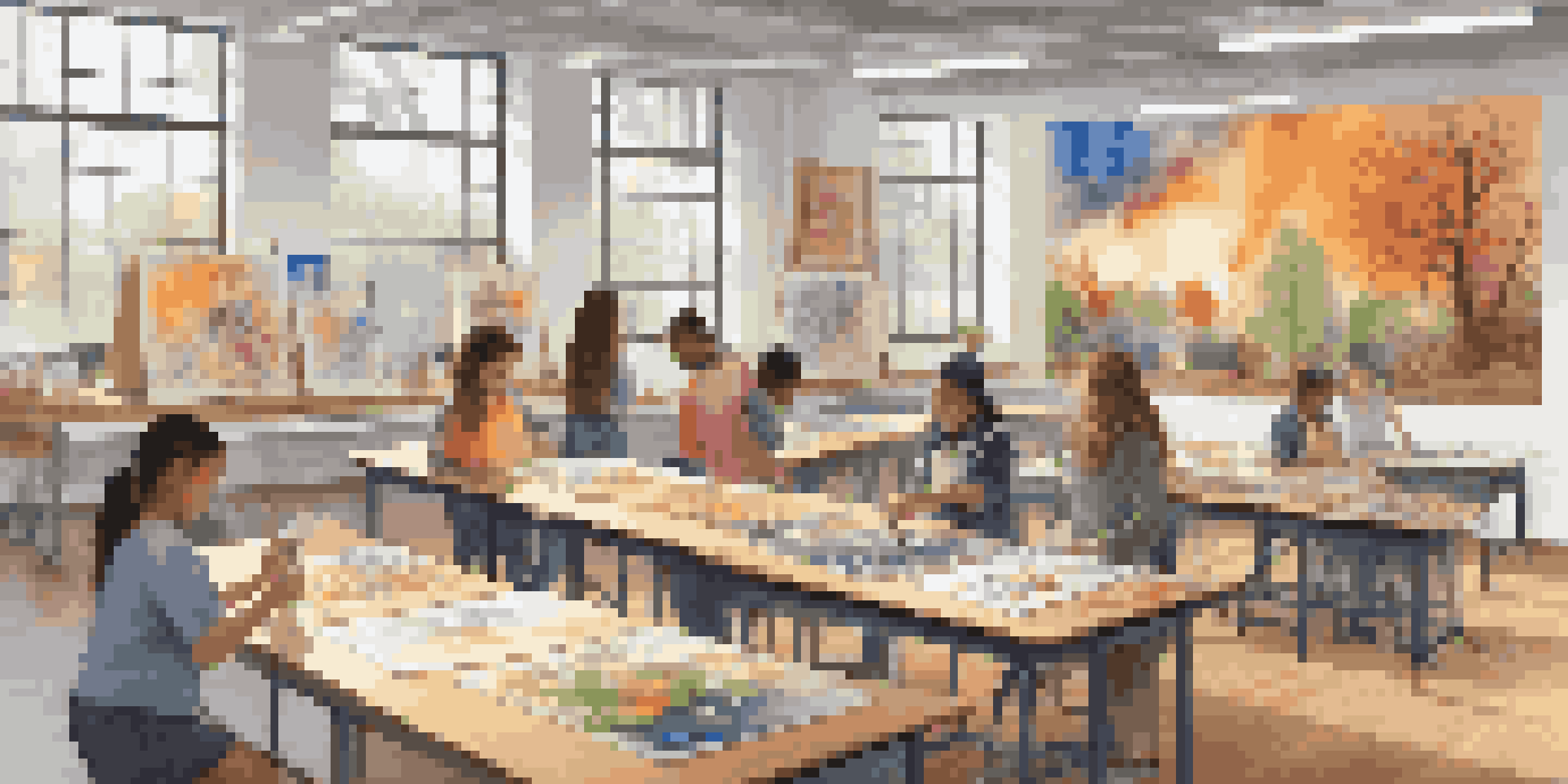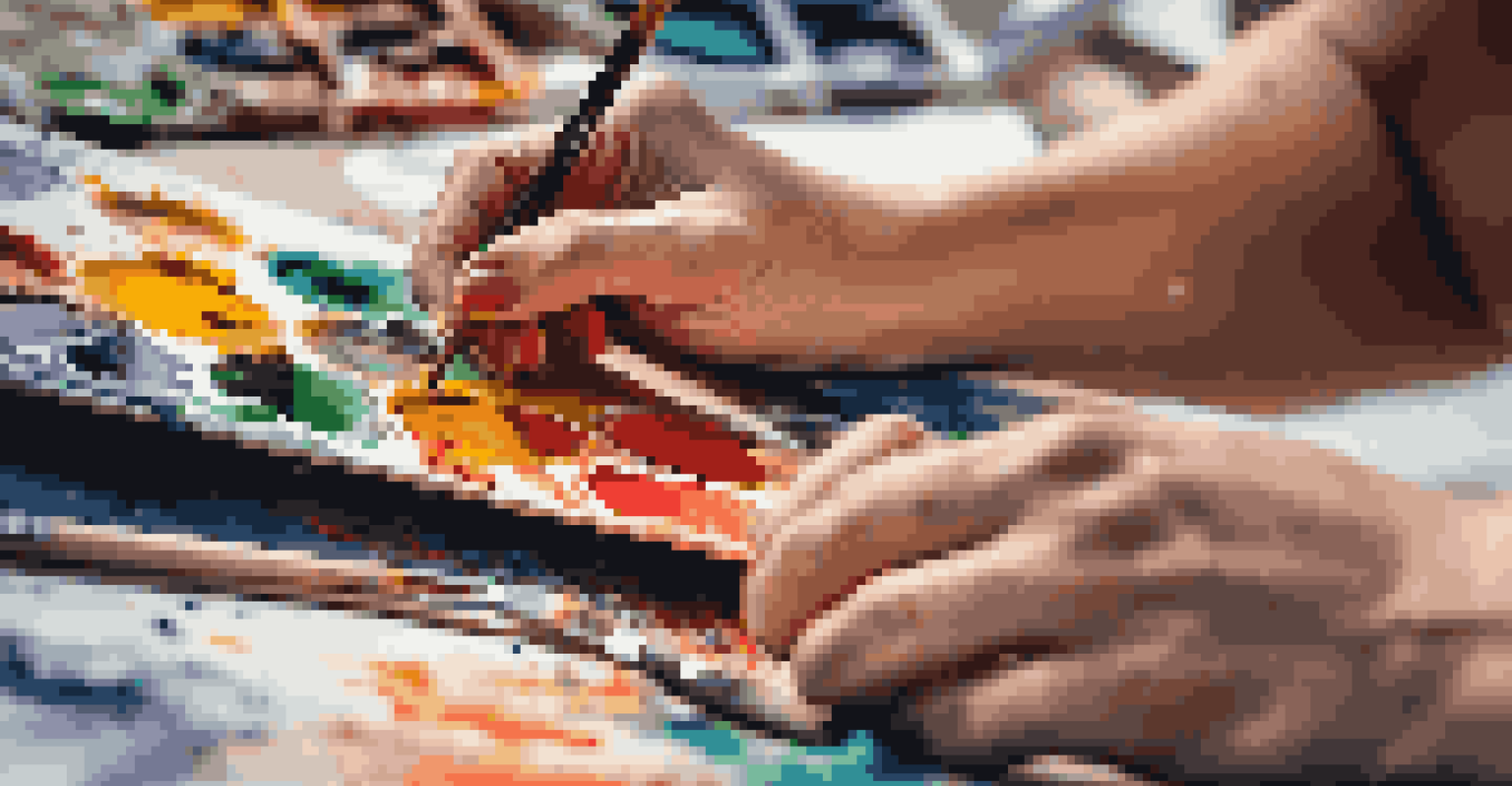The Role of Art Education in Fostering Creativity Today

Understanding Art Education and Its Importance
Art education encompasses teaching and learning about various forms of art, including visual, performing, and digital arts. It's a vital part of the curriculum that nurtures not just technical skills but also emotional intelligence. In a world where technology often dominates, art education offers a refreshing perspective by focusing on human expression and creativity.
Every artist was first an amateur.
Through art, students learn to explore their identities and express their thoughts and feelings. This process encourages them to think critically and develop unique viewpoints. As they engage in artistic activities, they also cultivate resilience and adaptability, which are crucial skills in today's fast-paced environment.
Moreover, art education fosters an appreciation for diversity and cultural heritage. By studying different art forms from various cultures, students can connect with a broader world view. This not only enriches their learning experience but also promotes empathy, understanding, and respect for others.
Creativity as a Core Skill for the Future
In our rapidly changing world, creativity is increasingly recognized as a vital skill across all industries. Employers are not just looking for candidates with technical knowledge but also those who can think outside the box and innovate. Art education plays a key role in cultivating this creativity by encouraging students to explore and experiment with their ideas.

When students engage in artistic pursuits, they learn to approach problems from various angles, fostering a mindset that values exploration and experimentation. This is similar to how a scientist might test different hypotheses in a lab; artists also iterate and refine their work to achieve their vision. Such experiences in art classrooms prepare students for real-world challenges, where flexibility and creative problem-solving are essential.
Art Education Builds Critical Skills
Art education fosters creativity, critical thinking, and problem-solving abilities essential for success in various fields.
Additionally, creativity nurtured through art education can lead to breakthroughs in other fields, from technology to business. For example, many successful entrepreneurs cite their artistic backgrounds as pivotal in shaping their innovative approaches. This interconnectedness shows that cultivating creativity in students can have far-reaching effects beyond the art room.
Enhancing Critical Thinking and Problem-Solving Skills
Art education encourages students to analyze, interpret, and critique various forms of art, which enhances their critical thinking abilities. By discussing and reflecting on their own work as well as that of others, students learn to evaluate different perspectives and make informed judgments. This process is crucial not just in art, but in everyday decision-making.
Creativity takes courage.
Moreover, creating art often involves navigating challenges and constraints, from limited materials to tight deadlines. Students learn to identify problems and devise effective solutions, skills that are transferable to other areas in life. For instance, when faced with a design challenge, an artist might brainstorm multiple concepts before settling on the best solution, demonstrating resilience and adaptability.
Through these experiences, students develop a mindset that embraces challenges as opportunities for growth. This shift in perspective is vital as it prepares them for future endeavors where they might face obstacles. In essence, art education equips students with the tools they need to tackle complex problems with confidence.
Building Collaboration and Communication Skills
Art education often involves collaborative projects, where students work together to create a shared vision. This teamwork fosters communication skills as students must articulate their ideas, listen to feedback, and negotiate roles within the group. Such experiences mirror real-world scenarios where collaboration is key to success.
Moreover, engaging in group critiques and discussions helps students learn how to give and receive constructive criticism. This skill is essential not only in art but in any professional field where teamwork is vital. Learning to express thoughts clearly and respectfully ensures that everyone's voice is heard, promoting a supportive environment.
Emotional Well-Being Through Art
Engaging in art provides students with an emotional outlet, enhancing their mental health and resilience during formative years.
As students collaborate on artistic projects, they also develop a sense of community and belonging. This connection can boost their confidence and motivate them to take creative risks. Ultimately, these collaborative experiences prepare students for varied social and professional interactions in their future.
Art Education's Impact on Emotional Well-Being
Engaging in art can be a powerful form of self-expression, allowing students to process their emotions and experiences. Art education provides a safe space for individuals to explore their feelings, which can be particularly important during formative years. This emotional outlet can lead to improved mental health and resilience.
Research has shown that creative activities can reduce stress and anxiety, making art education an essential component of holistic development. When students express themselves through art, they often experience a sense of accomplishment and pride in their work. This boosts their self-esteem and encourages them to take on new challenges.
Furthermore, art education fosters mindfulness and presence, as students focus on the creative process rather than external pressures. By immersing themselves in their artwork, they cultivate a sense of peace and clarity. This emotional grounding can have lasting benefits, helping them navigate life's ups and downs more effectively.
Integrating Technology in Art Education
In today's digital age, integrating technology into art education has opened up new avenues for creativity. Digital tools enable students to experiment with various mediums and techniques that were once limited to traditional methods. This integration not only enhances their artistic skills but also prepares them for a tech-driven workforce.
For example, students can use graphic design software to create digital art, or explore animation and video production. These experiences not only expand their creative repertoire but also teach them valuable skills relevant in fields like marketing, advertising, and entertainment. It’s a great way to blend artistic expression with technical know-how.
Technology Enhances Artistic Learning
Integrating technology into art education expands creative opportunities and prepares students for a tech-driven workforce.
Moreover, technology fosters collaboration beyond the classroom. Students can share their work online, receive feedback from peers around the world, and even collaborate on global art projects. This connectivity enriches their learning experience and broadens their understanding of art as a universal language.
The Future of Art Education and Creativity
As we look to the future, the role of art education in fostering creativity will only become more significant. In a society that values innovation, schools must prioritize programs that support artistic exploration. This means not only maintaining traditional art classes but also adapting to new trends and technologies that engage students.
Educational institutions should advocate for arts integration across subjects. By incorporating creative projects into science, math, and language arts, students can see the interconnectedness of different disciplines. This holistic approach not only enriches their learning but also ignites their passion for creative expression.

Ultimately, investing in art education is investing in the next generation of thinkers, problem-solvers, and innovators. As students develop their creative potential, they will be better equipped to tackle the challenges of tomorrow, making the world a richer, more imaginative place.